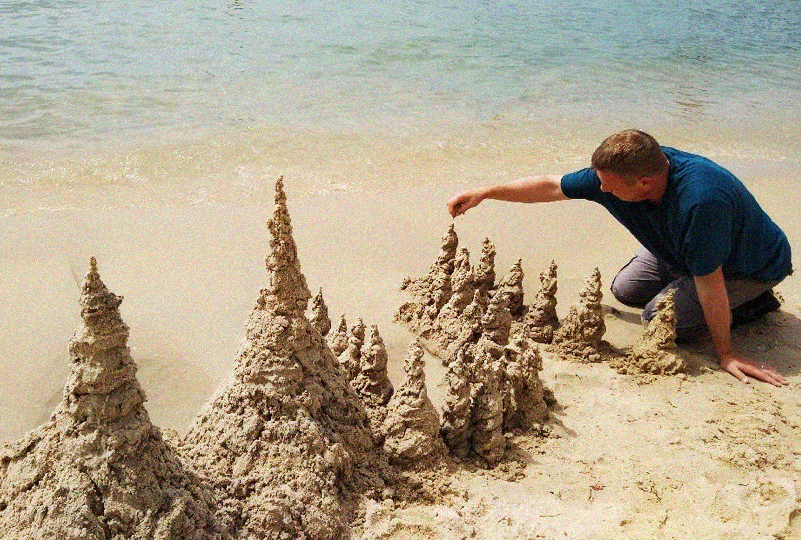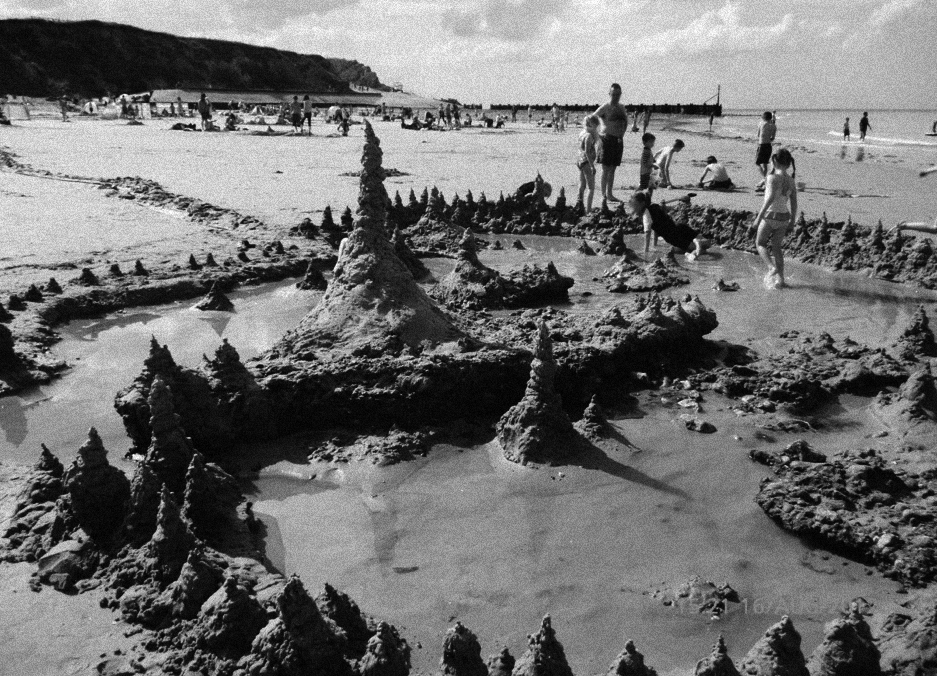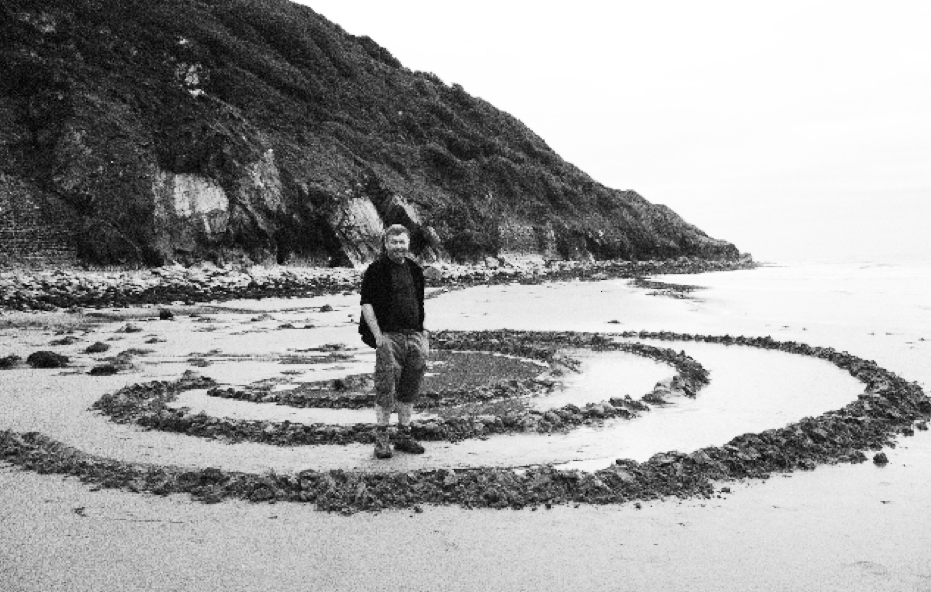
1. Somewhere in Wales ...

2. Gathering a crowd in Norfolk

3. South of France

4. Ready for the tide to turn, Wales
Danny's study of turning tides isn't just the result of a career devoted to statistics and social trends...
...the truth is his interest goes back to his earliest memories on the beach making "drip sandcastles" with his father David.
Ideally made just as the tide starts going out on a beach with tidal pools or streams, Danny can spend anything up to 9 hours building his Gaudiesque installations, pictured left.
So, what exactly are drip sandcastles? "Back in the day," David writes, "when all television was black and white, there was often a problem with programs not fully occupying their slot. The BBC had one of these which showed someone (I think in the Netherlands) making drip sandcastles on a beach. I had never seen one on an English beach."
He and his young familiy soon became enthusiastic converts. He also enjoyed the way they created a great sense of community on the beach. "The really social event is when there is sufficient water flowing down the beach to do water-works with added drip sandcastles. Then you can usually reckon on getting half the children on the beach to participate!"
Danny inherited his father's enthusiasm. "Bucket castle’s very quickly become boring to make and require very little skill. After the first two dozen castles are made the interest goes, it's all the same. But every drip castle is different," he said. "As soon as you start building them they become a magnet to children on the beach, which makes them hard to do when you're single. I had to wait to have my own kids before I could get into them again."
Luckily his children shared his enthusiasm, and their family album is filled with photos of mini utopias and fantasy landscapes that were the backdrop for hours of fun and treasured memories. "Drip castles are all about being in the moment - you don't do them to win prizes," he says.
Along with a good drip technique (see here), these castles require the right kind of sand. His advice is: "Beaches in West and South West Wales and North Devon good. On the North East coast of England from Robin Hood’s Bay northwards to Bamburgh or Mablethorpe and Filey are OK. The south coast of England is less promising, but the beach at Swanage works."
Danny also recommends using Google Earth to identify beaches with streams and heading out the day after rain. "It helps if there is a little elevation inland. Beaches with no hills behind tend to lack good streams. We tend not to put sewage out on our streams nowadays on UK beaches; but it is still worth double checking!"
MAKE YOUR OWN DRIP CASTLE UTOPIA
- Find a beach with streams or tidal pools. Alternatively dig a hole by your utopia site and fill with water at high tide.
- Build a small mound to act as your base. If you like you can build a series of bases forming the outline of your drip castle landscape (see photo 4 above). This way you can set helpers to work quickly.
- Grab a small handful of watery sand from your pool, stream or bucket, and start dripping. To get maximum control let the watery sand drip through your fingers (see animation), with your hand held as if you are sprinkling salt on your chips.
- For additional fun incorporates streams, drift wood and ice-cream breaks.